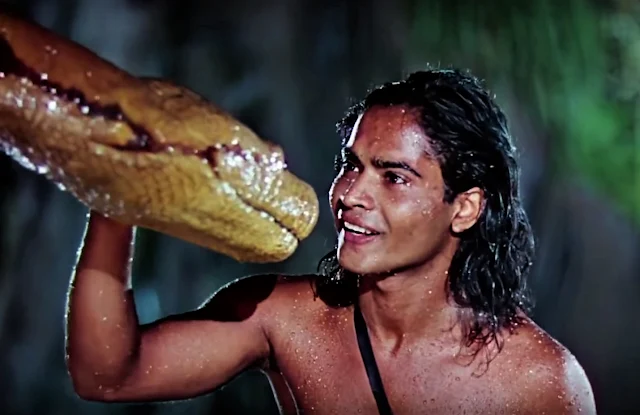For a forthcoming review, I recently read
the third volume of Simon Callow's projected four-volume biography of Orson Welles, in which Callow says, "murky though the world it discloses may be, every frame of
Touch of Evil celebrates the art of film." I think that's exactly right, and it may be why so many of us love it -- and why it leaves many others cold.
Touch of Evil is as mannerist as a Caravaggio painting, a dazzling demonstration of style and technique that takes precedence over character, over narrative, even over the performers on screen. The movie is, again in Callow's words, "mercurial, fluid, inventive, constantly morphing stylistically in dream-like fashion." Who else but Welles could have made so much of Charlton Heston in brown-face as a Mexican cop? Who else would have scattered so many familiar faces, from Akim Tamiroff to Zsa Zsa Gabor, throughout a film without turning it into a gallery of cameos? Who else would have encouraged Dennis Weaver to give such a hilariously jittery over-the-top performance? And is there a better curtain line than the one spoken by Marlene Dietrich as the bloated corpse of Hank Quinlan (Welles) lies wallowing in the canal: "He was some kind of a man.... What does it matter what you say about people?" It's a film populated by grotesques -- even the "normal" people like Vargas (Heston) and his wife (Janet Leigh) have something askew about them. The only authentic human emotion on display in the movie is that of Menzies (Joseph Calleia), whose love for Quinlan comes to such a bad end. What we see today is a restoration, made in 1998 in a laudable act of corporate responsibility by Universal, which had botched the release of the movie 40 years earlier. It follows the suggestions made by Welles himself in a 58-page memo after Universal hacked up the original release version. Among other things, the restoration removed the credits that had been superimposed over the celebrated three-minute, 20-second tracking shot that begins the film. The restoration also allows us to see Russell Metty's cinematography in pristine condition.
